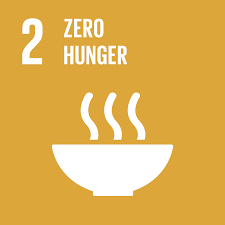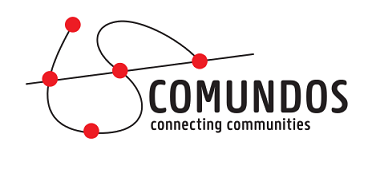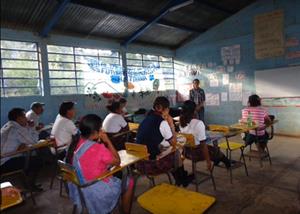SDG02 in the classroom: Zero Hunger
At the end of the lessons, the students will be able to:
- Understand what SDG2 aims to
- Understand the difference between hunger and malnutrition
- Identify the reasons behind food waste
- Understand the importance of sustainable agriculture
- Analyze digital stories on SDG2
SDG2 aims at "End hunger, achieve food security and improved nutrition, and promote sustainable agriculture". SDG2 (zero hunger) is highly related to SDG1 (no poverty) as food is one of the most fundamental basic needs that a person living in poverty is unlikely to access. However, SDG2 focuses not only on ending hunger and achieving food security but also on improving nutrition. Often, a lack of variety in diet leads to malnutrition and various health problems. That's why SDG2 also focuses on the promotion of sustainable agriculture, which can lift the burden of hunger and malnutrition in the world. Besides that, sustainable agriculture fights climate change.
Brainstorming session through the following questions:
- Before you can eat a dish, there is a whole long process behind it we often forget about. What steps lay before you can eat your food (food supply chain)1?
- Does the world produce enough food to feed all 7.89 billion people?
- Do you think a package of beans costs the same in all countries? Why?
- What are the consequences of lowering the prices of fast food (junk food)?
- Is there a difference between hunger and malnutrition2?
- Lack of proper food storage facilities (i.e. fridges) is one of the reasons behind food waste. Do you know other reasons?
- Not all agriculture is sustainable. For instance, sustainable agriculture enables biodiversity to flourish. Do you know other key elements of sustainable agriculture?
- What little action can you take in your daily life to help achieve this goal?
1 Note for teachers: this video explains the food supply chain
2 Note for teachers: this article clarifies the difference between hunger and malnutrition.
Possible adaptations: (Online) This activity can be done with the use of online tools (i.e. Jamboard; Miro, Mentimeter).
Related resources:
- SDG2 UN website provides all the information needed to dive deeper into the topic, including facts and figures, and targets.
- This website of Food and Agriculture of the United Nations defines what Sustainable Food and Agriculture (FAO) means.
- Actions you can take.
- Too Good To Go is an application with the aim of fighting food waste. You can explore the website to find out the reasons behind and benefits of the App Too Good To Go.
Children are the most vulnerable target to suffer from hunger and malnutrition. In today's world, how many kids are stunted or suffer from wasting or are overweight? Show the image to the students with numbers covered (as shown in the picture). Then, ask the students to guess the number missing, according to their beliefs. Afterwards, show the original infographic (UN).

Possible adaptations: Create a quiz on Google Form or use another online quiz tool. More numbers can be asked, considering the infographic. Afterwards, it is suggested to show the original infographic to the students for further clarification.
This activity can be done individually or in groups of 4-5 students.
 Story 2: Looking for alternatives in agriculture
Story 2: Looking for alternatives in agriculture
 Story 3: Increase production on small farms
Story 3: Increase production on small farms
- After watching these two videos, in your opinion, what is actually causing hunger and malnutrition?
- What else could school do to promote healthy and balanced diets and prevent malnutrition?
- What are the added values of supporting small and local farms?
You can also watch other digital stories of Comundos related to SDG2.
This quiz is about UN Goal 2: Zero Hunger. You can either use it at the end of your lesson to revise the topics you have already talked about, or in the beggining of the lesson to challenge students prior knowledge and gain their attention.

For SDG2 (zero hunger) sheet, our favourite pedagogical twist is:
Place-based learning: Prepare a tour to an organization/ centre that works to reduce hunger in the neighborhood of the school to learn about a specific SDG. The development of the brainstorming session can be guided by the organization director or any other member of the organization. Foster students to ask additional questions (if interested). Afterwards, a little group activity to solve a problem or carry out an activity for the good of the organization can be planned in advance and implemented in the field.
If you have another pedagogical twist in mind, feel free to apply or check the pedagogical twist list at page.
- Esther Ndichu: Hunger isn’t a food issue. It's a logistics issue (TedTalk).
- Join us for a Zero Hunger Future shows examples of projects to help achieve SDG2.

A gift for Comundos
Over the years, Comundos has helped remote communities around the world by teaching critical thinking, media literacy and the use of communication technology.
To do this effectively, we need your support for computers, translations, courses and social media management.
Thank you .
BE11 1030 2973 8248





 Story 1: Breaking paradigms
Story 1: Breaking paradigms